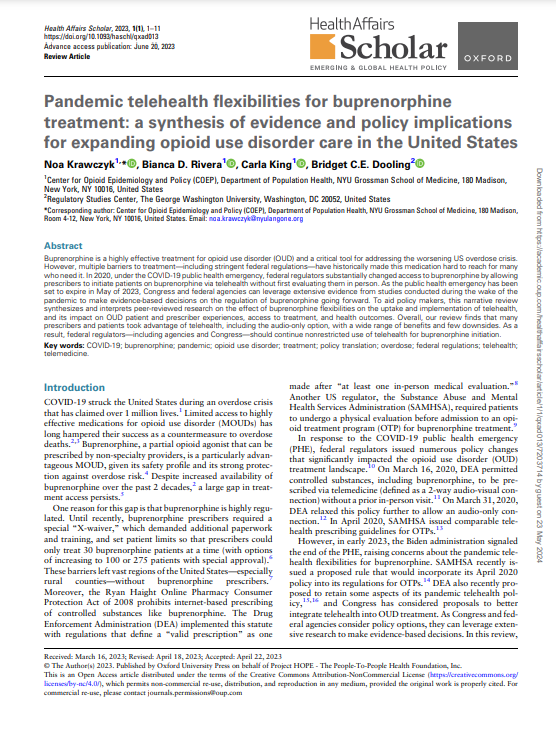Headline
Telehealth for buprenorphine treatment is associated with improved patient and provider satisfaction of care.
Context
Buprenorphine is a safe and effective medication for treatment of opioid use disorder (OUD), but it is underutilized. Federal regulations that require in-person medical evaluations before buprenorphine induction can limit uptake of these medications. In spring 2020, the COVID-19 pandemic led federal authorities to relax many health care access restrictions, including telehealth buprenorphine treatment. This narrative review synthesizes evidence on patient and prescriber experiences, as well as patient health outcomes, resulting from this pandemic flexibility.
Findings
The authors reviewed 41 articles, primarily observational studies, and found strong evidence around the uptake of telehealth buprenorphine treatment among patients and providers across the country, including in different care settings and for different insurance types. There was also an association with better retention in care. While evidence was limited on health outcomes, the study found no association with increased overdose risk. Both patients and providers were largely positive about their experiences with telehealth, although some voiced dissatisfaction with reduced patient-provider connection and contact.
Takeaways
This study demonstrates that telehealth buprenorphine treatment is feasible and is experienced positively by many patients and prescribers. It can also benefit certain groups who face challenges accessing care in-person, such as people in rural communities or people balancing childcare. As pandemic flexibilities are set to expire for telehealth and buprenorphine, federal policymakers can consider the findings in this study as they determine whether to make flexibilities permanent.

